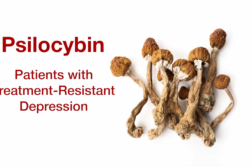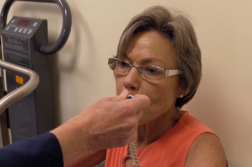ORLANDO, Fla. (Ivanhoe Newswire) — Endometriosis is a condition that affects more than ten percent of women between 14 and 44. Doctors don’t know exactly what causes it, but it’s linked to too much estrogen in a woman’s body. Ivanhoe reports on ways to lower your estrogen and maybe also lower your risk of endometriosis.
One in ten women will have endometriosis during her reproductive years. It’s a condition that happens when tissue grows outside of a woman’s uterus causing pain, fatigue, and sometimes infertility.
Kevin M. Audlin, MD, FACOG at Mercy Medical Center says, “It affects intercourse. It affects work life. It affects social life. It affects fertility.”
Just ask Mallory Harrison …
“I would start to cancel plans because I was just in so much pain. I just didn’t want to get out of bed,” explained Harrison.
But some simple habits may lessen your risk of developing the condition. First, taking prescription hormones can lower your estrogen levels and reduce pain. These come in the form of pills, patches, and rings. Also, skip the alcohol. It can raise the amount of estrogen in your body that might lead to endometriosis. Don’t drink more than one alcoholic beverage a day. Caffeine may also raise estrogen, but the link isn’t as strong. Regular exercise might also lower your risk of endometriosis. Aim for at least 30 minutes four to five times a week. Lastly, you may want to avoid foods with a high soy content. They could boost estrogen levels in your body. With ways to lower your risk of endometriosis.
It can take up to ten years for women to be diagnosed with endometriosis. Treatments typically include birth control pills, medications, or surgery.
Contributors to this news report include: Julie Marks, Producer; Roque Correa, Editor.
Free weekly e-mail on Medical Breakthroughs from Ivanhoe. To sign up: http://www.ivanhoe.com/ftk
PREVENTING ENDOMETRIOSIS?
REPORT #2512
BACKGROUND: Endometriosis is a condition in which tissue similar to the lining inside the uterus (called the endometrium), is found outside the uterus, where it induces a chronic inflammatory reaction that may result in scar tissue. It is primarily found on the pelvic peritoneum, on the ovaries, in the recto-vaginal septum, on the bladder, and bowel. Endometriosis affects an estimated 1 in 10 women during their reproductive years, usually between the ages of 15 to 49, which is approximately 176 million women in the world. However, endometriosis can start as early as a girl’s first period, and menopause may not resolve the symptoms, especially if the woman has scar tissue or adhesions from the disease and/or surgery. There is no known cause of endometriosis, but it is highly likely that certain genes predispose women to develop the disease. Thus, women have a higher risk of developing endometriosis if their mother and/or sister(s) are also affected. It is also possible that age when the menstrual period starts, other gynecologic factors, and environmental exposures influence whether a woman is affected.
(Source: http://endometriosis.org/resources/articles/facts-about-endometriosis/)
CAN ENDOMETRIOSIS BE PREVENTED?: Although there’s no way to totally prevent endometriosis, you may be able to lower your chances of getting the condition and to manage your symptoms if you do get it. Your doctor can prescribe hormones that can lower your estrogen levels. These include birth control pills, patches, or vaginal rings with low doses of estrogen. Hormone therapy can also help with pain, but the effects will only last as long as you are taking the hormones. Working out is great for your whole body. And if you make it a habit to do at least 30 minutes of aerobic exercise four to five times a week, it could lower your chances of getting endometriosis. One study also shows that exercise can boost your levels of “good” estrogen metabolites and lower your levels of “bad” ones. How much that might affect your chances of getting endometriosis still needs more research, though. Drinking too much alcohol can raise the amount of estrogen your body makes, which could lead to endometriosis. Women who drink moderate amounts of caffeine from soda and green tea had higher levels of estrogen. But, when other researchers checked eight studies on caffeine and endometriosis, they found no link.
(Source: https://www.webmd.com/women/endometriosis/can-i-prevent-endometriosis)
NEW ENDOMETRIOSIS RESEARCH: Until now, scientists have had to study cells in lab dishes and animal models to understand what was going on in women with endometriosis. Now, researchers have created a lab model of an entire female reproductive system, a game-changing invention that opens up a world of possibilities for researchers studying this disease. Although the model has the characteristic appearance of advanced lab equipment, it contains a complete set of ovaries, fallopian tubes, uterus, cervix, vagina, and liver, all connected by a blood-like fluid. “This is nothing short of a revolutionary technology,” Teresa Woodruff, a reproductive scientist/director of the Women’s Health Research Institute at Northwestern University Feinberg School of Medicine, said. “This mimics what actually happens in the body,” Woodruff said. “In 10 years, this technology, called microfluidics, will be the prevailing technology for biological research.” In addition to being unique in its ability to model numerous processes in parallel, the system’s strength lies in it being able to model individual patients. This allows researchers to personalize treatments, taking into account differences that might make people react differently to a particular treatment.
* For More Information, Contact:
Dan Collins



